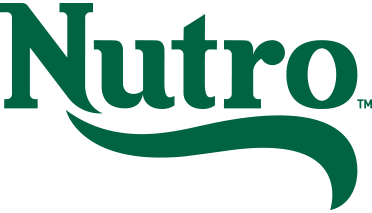Large Or Small, Your Dog Needs Proper Nutrition
Size isn’t the only factor that sets large and small dogs apart — their nutritional needs do, too. What, when and how you feed your dog should fit their size. Here’s how you can make sure you’re providing the best for your dog and their diet.
Size Things Up
First, let’s establish what we mean by “large” and “small.” Any dog weighing more than 50 pounds as adults can be considered large. Examples of large-breed dogs include Bernese mountain dogs, boxers and greyhounds. Small dogs fall into the 10- to 25-pound range as adults and include breeds such as beagles, cocker spaniels and Scottish terriers.

Consider Lifespan And Maturation Differences
Now let’s talk lifespan. Fun fact: Large mammals (like whales) tend to live longer than smaller ones (like hamsters). But as you may know, this isn’t the case for dogs. While scientists aren’t quite sure why, smaller dogs generally live longer than larger dogs.
When it comes to maturation, larger dog breeds take longer to reach their adult size than smaller breeds. The age at which puppies reach adulthood varies by breed size. Small- and medium-breed puppies usually reach adulthood by the time they are 9-12 months old. Large- and giant-breed puppies keep growing past their first birthday, typically reaching adulthood between ages 18-24 months.
Choose Puppy Food Based On Breed Size
Whether you have a small- or large-breed dog, feeding a growing puppy a nutritious diet is crucial for their long-term health. But it’s especially important to make sure you’re feeding a large-breed puppy a diet formulated for large-breed puppies. Too much calcium can hinder their skeletal development, and because large-breed pups have a longer maturation period, you want to make sure they’re growing properly and at the right rate.
Choosing a puppy food that meets the nutritional guidelines established by the Association of American Feed Control Officials (AAFCO) for your dog’s size and life stage will set your puppy up for success, no matter their size.

Take Activity And Metabolic Rate Into Account
Certain breeds are more active than others. For instance, most terriers love to zoom around — and all that activity can require more calories. If your dog is burning energy above and beyond their leisurely daily walks, make sure you’re feeding them enough food to fuel their pace.
In addition, small dogs have smaller stomachs and require more calories per pound of food than larger breeds. And because they have smaller mouths, you should look for a smaller kibble appropriate for their mouth size.
Be Mindful Of Food Sensitivities
Some dogs end up having sensitivities to certain foods: beef, chicken, eggs, milk and wheat are the most common culprits. Talk with your vet if you suspect your dog may have a food sensitivity. Try switching to a food that caters to their sensitivities with a Limited Ingredient Diet.
Be Aware Of Toxic Foods
Keep foods that are toxic to dogs — like chocolate, caffeine, onions, xylitol (found in sugar-free gums), and grapes and raisins — out of reach of your curious canine. While these foods are harmful to all dogs, if you own a small dog, you need to be particularly cautious. Why? A portion that might not affect a large dog as severely could wreak havoc on your small dog’s system.
Just like humans’ dietary needs vary from person to person, so do dogs’. Factoring in your dog’s breed size when choosing food and being aware of their nutritional needs will help your dog live a healthy and fulfilling life.




